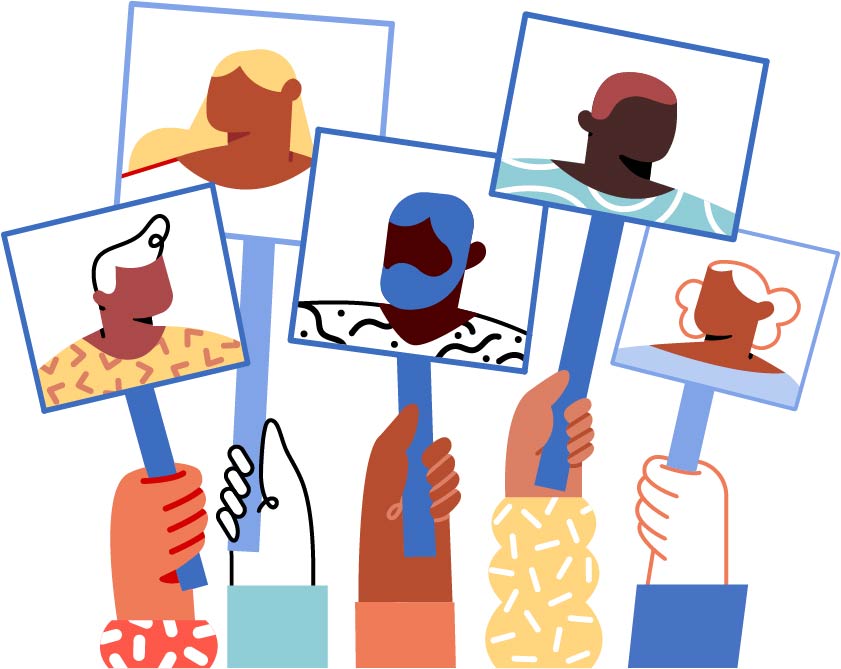User experience (UX) relates to how a person feels when interacting with a digital system. With the integration of technology in our everyday lives, this branch of human-computer interaction has boomed. User experience is now at the heart of every app, new voice assistant and fitness band one uses. This column is dedicated to exploring the design aspect of UX which borrows principles from cognitive sciences. We will be looking at how certain social media platforms have used these principles to create addictive app features and intuitive design elements that have now become a staple in our lives.
Love it or hate it, this app has a grip on everyone. Everyone who owns a smartphone is a Tiktok user. The Tiktok Effect is inescapable and it’s users’ fall into one of three camps
- You are a former user who has deleted the app for good after the shame of scrolling through videos until 3 am in bed got too much to bear.
- You currently still use the app but don’t like to admit that out loud
- You have been exposed to Instagram reels/the renegade (or is that too old?)/any of the top 40 pop hits on Spotify – all derivatives of Tiktok.
TikTok’s app design is structured with the precise biting cuts to unlock and any mechanism for restraint and discipline in the mind. This is precisely what makes the app so addictive from it’s deviously designed interface to its all-knowing algorithm.
Decoy Effect and Choice Architecture
When you open the Tiktok app, you are instantly redirected to the for you page (fyp) rather than the following page. Talking to other Tiktok users, most will admit they seldom ever make the switch to the “following” page to look at content from the creators they follow. This sounds counterintuitive to the way that most social media apps work where the opening feed of any other platform shows the most recent posts from accounts you follow or engage with the most.

To add to this, if you ever do check out the following page, the Tiktok algorithm would then show you repetitive content from a select few content creators. Compare this to the endlessly regenerating fyp that shows you the content of various categories and new trends.
This is an example of the decoy effect, a term used by cognitive scientists and marketers which illustrates the point that you can make an option more desirable and nudge someone to pick it if you place it next to a decoy option that is designed to seem worse in comparison.
In the case of Tiktok, the following page is presented to users as a decoy option that is repetitive in the content shown and requires conscious effort to access. This makes the fyp seem more engaging in comparison with its continuous stream of content and automatic accessibility.
The Self Relevance Effect
This effect emerges as a collection of studies conducted by cognitive psychologists that show individuals make sense of their reality by placing themselves at the centre of the mental narratives concerning the external world. All cognitive biases that document this point go to show that we humans have the mental propensity to hold on to information that is personal a lot better than external facts.

You go about your day, blissfully follow your daily routine until you encounter the TikTok algorithm. The Tiktok algorithm attaches weights to the content you and other users like you interact with and then tailors recommendations on the fyp based on content you have previously enjoyed and content users like you are currently enjoying. Suddenly you find people across continents who also hate the shape of their nose or that some stranger 5000 miles across the world has an eerily similar relationship as you did with your toxic ex.
All this scarily relatable content puts you in a state of hyper-awareness that works with the brain’s deposition to concern yourself with information that is related to you. Consequently, this gets users to come back to TikTok for more #TMI storytimes and going down a rabbit hole of the bad #backprofile trend to remind you of your terrible posture.
The Law of Triviality
Have you ever been in a situation where people wilfully ignore the elephant in the room and give a disproportionate amount of attention to trivial issues? If so, you have encountered the social phenomenon known as the law of triviality. The reason why people engage in discussion over trivial matters is that it gives the sense that their say matters and their actions can deliver observable impact. Contrast this to a graver issue where people are afraid that they lack the capabilities to make a sound judgment on the matter their single input does very little to contribute to the matter. The rise in the appeal of Tiktok, an app that managed to hit 2bn downloads from just half a million, two months after worldwide lockdowns can be understood similarly.
To contain the spread of the virus, people were told to stay home, wash their hands regularly and maintain social distance. Yet as we all know, the first wave of the virus was when the world witnessed an unprecedented rise in global Covid-19 cases. Seeing cases and death tolls around countries rise, it is easy for one to feel like their individual contributors can do very little to solve the spread of the virus.

So, what does the rational person then do? They escape into Tiktok and try to learn the “Say So” dance, make Dalgona coffee, do the “Chloe Ting 2 week shred” and escape the heaviness of news surrounding covid by complaining about how sore their hands are after doing any of the following trends. At least in the world of TikTok, your individual actions can make you feel like either an amateur dance or lose some weight.
Outgroup homogeneity bias
This cognitive bias posits that those individuals belonging to a group tend to see in-group members as more dissimilar than outgroup members who are perceived to be the same. Park, Bernadette, Rothbarth and Myron (1982) studied this phenomenon in an experiment where 90 sorority girls were asked to rate similarity between the faces of members of their own sorority, as well as two other groups. What they then found was that participants ranked members of their sorority as more dissimilar.

We can see this bias on full display with our interaction with the TikTok app. For example, if we look at fashion TikTok, we may find trends from women indulging in the light academia aesthetic to men confident enough in their sexuality to try on cute maid outfits and paint their nails. This then encourages you to experiment with the ways in which you can use the clothes you wear to express your individuality. However, when you step outside your house into your neighbourhood, it can feel like a shock to see everyone else dressed in boring, bland jeans and a tee.

This then hits you with the distinct realisation that only on Tiktok, are people expressively individual and in the outside world, people are just bland. In the hope to escape the cognitive dissonance of these differences, it then becomes easier to escape into the world the algorithm has created for you and explore the diversity that you know you can appreciate of like-minded yet beautifully individual people like you.
Conclusion
I’m not saying that Tiktok is a brain-numbing, digital voodoo of an app but its ability to curate a specific world for each of its users is what makes it very addictive. Additionally, it is not assumed that these effects are uniform across all users of Tiktok but it is important to be aware of the way in which any app has the potential to influence you in unforeseeable ways.

Leave a Reply